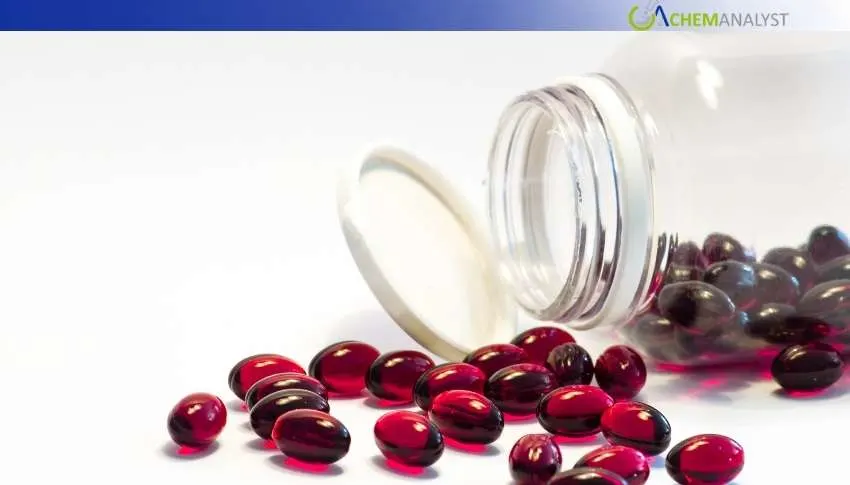Welcome To ChemAnalyst

North American import prices of Coenzyme Q10 (CoQ-10) indicated a minor recovery during the third week of August following previous losses. The improvement was driven by fresh buying strength from pharmaceutical and nutraceutical industries, seasonal restocking, and relatively firmer supplies from Asian sellers. Increased freight surcharges, currency shifts, and more assertive price attitudes by sellers also put upward pressure on prices. Though the rebound is measured and not steep, it reflects better market equilibrium. Future direction will depend on seasonal demand, supplier policies, and international trade flows, analysts forecast, with prices likely to hold steady or advance incrementally in the short term.
North American Coenzyme Q10 (CoQ-10) import prices have posted a modest rally in the third week of August, after a recent downtrend. Participants cite the increase has been supported by adjustments in supply, stronger downstream demand signals for CoQ-10, and more robust trade attitudes, to give prices a marginal boost after weeks of muted pricing.
The earlier declining trend in prices of CoQ-10 imports had been largely driven by sufficient inventories with regional distributors, as well as consistent arrivals from Asian producers. Consequently, buyers had relatively low procurement costs until early August. However, with CoQ-10 inventory drawdowns becoming more apparent and restocking activities resuming in key pharmaceutical and nutraceutical segments, import prices began to recover, reflecting a healthier balance between demand and supply.
Various market experts state that that the pharmaceutical sector, a major consumer of CoQ-10 for formulations targeting cardiovascular health and energy supplements, has displayed renewed buying momentum. The nutraceutical industry, meanwhile, has experienced seasonal replenishment requirements, particularly as manufacturers position themselves ahead of anticipated demand in the final quarter of the year.
This coincided with a measured slowdown in CoQ-10 arrivals from certain Asian exporters, who have redirected part of their supplies toward domestic markets, thereby tightening availability in North America. Freight market dynamics have also helped the modest recovery. While container shipping rates continue to be below the peaks of earlier this year, supply chain bottlenecks for choosing Pacific routes and increasing fuel surcharges have put a premium squeeze on landed prices for CoQ-10. Traders suggest that while these additional costs are not overwhelming, they have nonetheless factored into the overall import valuations of CoQ-10.
Currency fluctuations added another dimension to the price rebound. A slight appreciation of the U.S. dollar against some Asian currencies boosted the import sentiments throughout the region, providing a supportive floor for the trader in the form of relatively higher imports at a lower cost. Along with this, sellers firming up their price stands to maintain margins has resulted in stabilization of the market after its previous bearish tone.
Yet even as the rebound holds, analysts warn that the rise is modest not dramatic, since overall sentiment across the CoQ-10 space still remains balanced. Plentiful capacities in India and China, the world's dominant suppliers, mean that any extended rally in prices stands to be cooled by constant export supplies. North American buyers are thus moving ahead with guarded optimism, benefiting from enhanced availability while keeping a lookout for possible cost increases over the next few weeks.
Forward, the path of North American CoQ-10 import prices will be influenced by an interplay between seasonal demand patterns, supplier tactics, and world trade flows. Should downstream demand for nutraceuticals and pharmaceuticals remain on their current strengthening trend, additional incremental price increases will be realized. Alternatively, if supply streams are constant and inventories keep filling promptly, prices can level off for the immediate future. At present, the third week of August is a time of slight but significant bounce back in CoQ-10 import prices, representing a return to stability after weeks of deterioration and reasserting the strength of the commodity within the larger North American nutraceutical supply network.
We use cookies to deliver the best possible experience on our website. To learn more, visit our Privacy Policy. By continuing to use this site or by closing this box, you consent to our use of cookies. More info.
